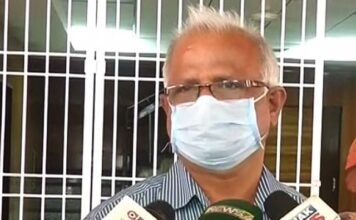New Delhi, Sept 28: Indian Railways with more than 160 years of rich history; presents a wide spectrum of both tangible and intangible heritage. Indian Railways is proud owner of four UNESCO accorded World Heritage Sites namely Darjeeling Himalayan Railway (1999), Nilgiri Mountain Railway (2005), Kalka Shimla Railway (2008) and Chhatrapati Shivaji Terminus, Mumbai (2004). There are two more in waiting or in the tentative list namely Matheran Light Railway and Kangra Valley Railway.
However, the repository of heritage of Indian Railway is not limited to its four world heritage inscriptions. Like any other industry, Railway technology evolves at a fast pace. For example, Steam Locomotives, Meter Gauge rolling stocks, Wooden body coaches are no longer in operation now. With their phasing out, lots of maintenance practices have also been gradually forgotten. At times, it becomes really impossible to locate an artesian who can do valve setting of a steam locomotive or a carpenter who can precisely fix the door of wooden body saloon. Beside rolling stocks, even equipment like block instruments, their tokens, token pickup devices, quadrant signalling devices, stationary vacuum exhausters, which were very common three decades ago, are now completely phased out.
Indian Railways, in addition to being a special industrial relic, occupy a special place within the national heritage spectrum of India. The remains of rolling mill, cupola, brake block foundry, forging anvils of any old Railway Workshop are not only historical evidences or industrial relics but sense of belonging to the workshop.
Similarly iconic station and office buildings at Mumbai (Victoria Terminus, Bandra Suburban, Churchgate), Howrah, Garden Reach (BNR Office), Chennai Egmore, Royapuram, Lucknow, Madurai etc. bear identities of their respective cities.
The Station and Office buildings, locomotives, coaches, wagons, equipment, artifacts etc. when appropriately preserved and open for public display create memories of the past in the heart of the future generation and thus help maintaining a continuity of human experience.
Indian Railways, over the years, have been endeavoring sustained and focused approach for safeguarding its industrial as well as living heritage and to transmit it intact to future generations.
Today, Indian Railway maintains 34 Museums, Heritage Parks and Heritage galleries, spread all over India, for creating unique and rich experience to visitors about Railway heritage in India. The National Rail Museum in New Delhi, Regional Rail Museums at Chennai, Mysore and Howrah, are iconic tourist destinations in their region.
Indian Railways have also preserved about 230 Steam Locomotives, 110 vintage coaches and wagons at prominent places including museums, heritage park etc., for public display. Many of these rolling stocks are more than 100 years old and they bring back memories of old glory to the mind of the viewers.
Indian Railways are also preserving about 16 Steam locomotives as working heritage. Although, not in regular service, these preserved steam locomotives are still capable of hauling tourist trains and ceremonial running. The Rewari Steam Shed has been rechristened as Rewari Heritage Steam Centre in 2002 for recreating the memories of working Steam Shed, a feat un-parallel in the World.Rewari Steam Centre now maintains six Broad Gauge and four Meter Gauge working steam locomotives, that include the iconic “Fairy Queen” (1855), placed in the Guinness Book of Record as being the oldest working locomotive in the World and “Akbar”, that featured in many Bollywood movies like Sultan, Gadar etc.
The Darjeeling Himalayan Railway (DHR) and Nilgiri Mountain Railway (NMR), both UNESCO accorded World Heritage Sites, operate Steam services on regular basis. DHR and NMR, with working steam locomotive holding of fourteen and six respectively, attract steam lovers from India and abroad. The sight and sound of Steam Locomotives recreated smells and romance of a by-gone era.
Indian Railways have a large repository of built heritage like buildings, bridges, via ducts etc. As of now, about 25 bridges and 70 buildings are designated as Heritage Assets by Indian Railways. Notable among them are Jubilee Bridge near Kolkata, Yamuna bridge near Naini, Sonenagar Bridge, Pamban via duct, Bandra suburban station, Pratap Vilas Palace, Vadodara, GlenogleBunglow, Mumbai, SER (erstwhile BNR) Headquarter, Kolkata etc. Indian Railways have been making special efforts to conserve these built heritages.
Indian Railways have recently launched its heritage web-page ( placing all relevant information including heritage inventories for easier access by citizen and all stakeholders.
With advent of technology and wider reach of internet, heritage displays need not be limited to collections in Museums and Galleries or in form of outdoor exhibits near prominent places like Stations, Administrative Offices etc. Indian Railways is collaborating with Technology partners for creating a Pan-India virtual museum in a digital web enabled platform. This virtual museum shall contain all railway heritage components e.g. Locomotives, Coaches, Building, Bridges, Documents, Artifacts etc. for world wide access through internet even on a mobile device.
Virtual museum shall also feature ‘contributory or crowd sourcing mode’ for soliciting contributions from large group of people, and especially from online communities. Such digital platform, already operational in some large museums in India, can also serve as ‘on-line’ repository of knowledge on Railway heritage, useful to students, tourists, research scholars and citizens.
Minister of Railway, in his budget speech 2016, has emphasized promotion of tourism through World Heritage Railways and Museums. Preservation of Railway Heritage and unlocking its potential for making significant and meaningful contributions to India’s knowledge society and Incredible India Campaign shall remain one of the prime social responsibilities of Indian Railways and its associated Public Sector Undertakings.
Source:- PIB


























